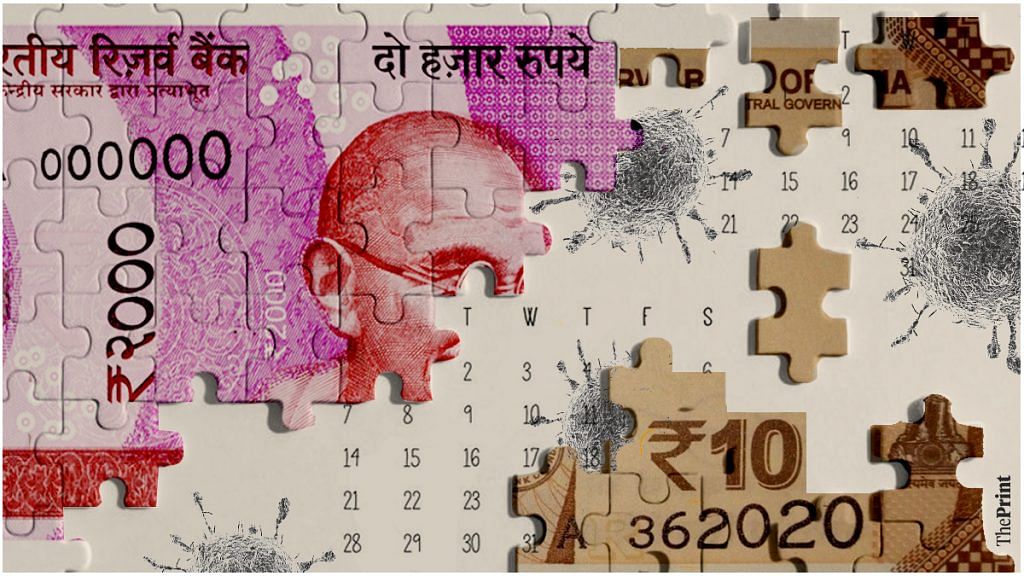Financial year 2020-21 is coming to an end. While the economy will recover sharply, the coming year is likely to see high volatility in financial markets. The volatility in asset prices is expected to be the outcome of domestic and global fiscal and monetary actions, on the one hand, and uncertainty on the other.
While 2020-21 was characterised by contraction in output, 2021-22 is likely to see high growth and sharp volatility as economies recover and financial markets struggle to shape new expectations and interest rates jump around.
As wave upon wave of Covid-19 is seen in both India and abroad, the year is likely to witness alternating good and bad news, causing volatility in financial markets. The tussle between bond markets and governments and central bankers, in India and abroad, who will try to sell government bonds and keep yields low, is likely to continue in the coming months.
Expectations of rising output and inflation will also put upward pressure on interest rates. This will affect both bond and stock markets. If people start to spend more, while governments try to borrow more, interest rates may refuse to fall. High liquidity may not have the same effect of pulling down interest rates as it did in previous episodes when growth was low.
Also read: How Modi govt can make the reborn Development Finance Institution a success this time
Higher yields in US
In the last few weeks in India, with a higher-than-expected announcement of the borrowing programme, the interest on government bonds started to inch up. While the RBI announced multiple open market purchases and operation twists to infuse liquidity and calm bond vigilantes, yields are facing an upward pressure. A stronger-than-expected recovery due to the fiscal stimulus of US$ 1.9 trillion has triggered fears of a surge in inflation. The US Treasury yield rose to its highest level despite assurance of a dovish stance by the Federal Reserve policy. Yields in the domestic market firmed up again due to a spike in US bond yields.
While the RBI again undertook a series of liquidity measures to soothe the markets, the developments in the US have the potential to destabilise the bond market in India.
There are concerns that higher yields in the US could lead to a flight of capital from emerging economies, including India. This could put a downward pressure on the rupee. But with record foreign exchange reserves nearing US$ 600 billion and a likelihood of a current account surplus this year, India seems to be in a better position to weather a repeat of a taper tantrum-like crisis of 2013 — India’s inflation was around 10 per cent, while this time, it’s roughly half of that level.
Higher global fuel prices could pose a risk to the inflation trajectory in the coming months. Inflation for the month of February rose above 5 per cent, primarily driven by higher fuel prices. Persistent higher inflation could pose a challenge for the RBI to continue with its accommodative stance. The RBI may have to consider raising interest rates, which could adversely impact the nascent recovery seen in the recent months. This would be challenging, given that bank credit growth remains uneven and weak.
Also read: Why RBI needs to be relieved from debt management duties to handle bond market issues
Positive growth
In 2020-21, the government announced a series of measures in different phases of the pandemic to mitigate the economic distress caused due to the pandemic and to facilitate the resumption of businesses. These included provision of collateral-free loans to MSMEs, partial credit guarantees to help NBFCs, and measures to boost capital spending and employment.
The RBI announced multiple measures to enhance liquidity to incentivise banks to lend to businesses at low interest rates. To support the firms adversely impacted by the Covid-19 pandemic, the RBI announced an across-the-board loan moratorium for six months till 31 August 2020. This was followed by a one-time restructuring of loans to give greater flexibility to banks to recast loans where necessary. To further ease the pain of borrowers, the Supreme Court put an interim stay on NPA classification in September.
With the gradual resumption of economic activities and support measures announced by the government and the RBI, the economy posted positive growth in the third quarter (October-December). In the first two months of 2021, economic recovery is seen to be gaining momentum. High-frequency indicators such as PMI Manufacturing and Services, electricity generation, GST collections, and sales of passenger vehicles continue to register steady growth. The government has projected GDP to contract by 8 per cent in the current year.
With the economy coming back on track, the series of regulatory forbearance measures are gradually being rolled back. The Supreme Court has lifted the stay on NPA classification. Withdrawal of the stay on NPA recognition and classification will allow banks to recognise accounts that have not been paying interest as non-performing assets. While this will end the uncertainty in the banking system, there could be a spike in bad loans.
The suspension of the Insolvency and Bankruptcy Code will be lifted. While there is a concern that this could lead to an increase in the number of cases being filed under the National Company Law Tribunal (NCLT), the creditors are likely to weigh all options before taking the company to insolvency.
Ila Patnaik is an economist and a professor at National Institute of Public Finance and Policy.
Radhika Pandey is a consultant at NIPFP.
Views are personal.
(Edited by Shreyas Sharma)
Also read: Why the fortunes of corporate India are beginning to show a sharp recovery
